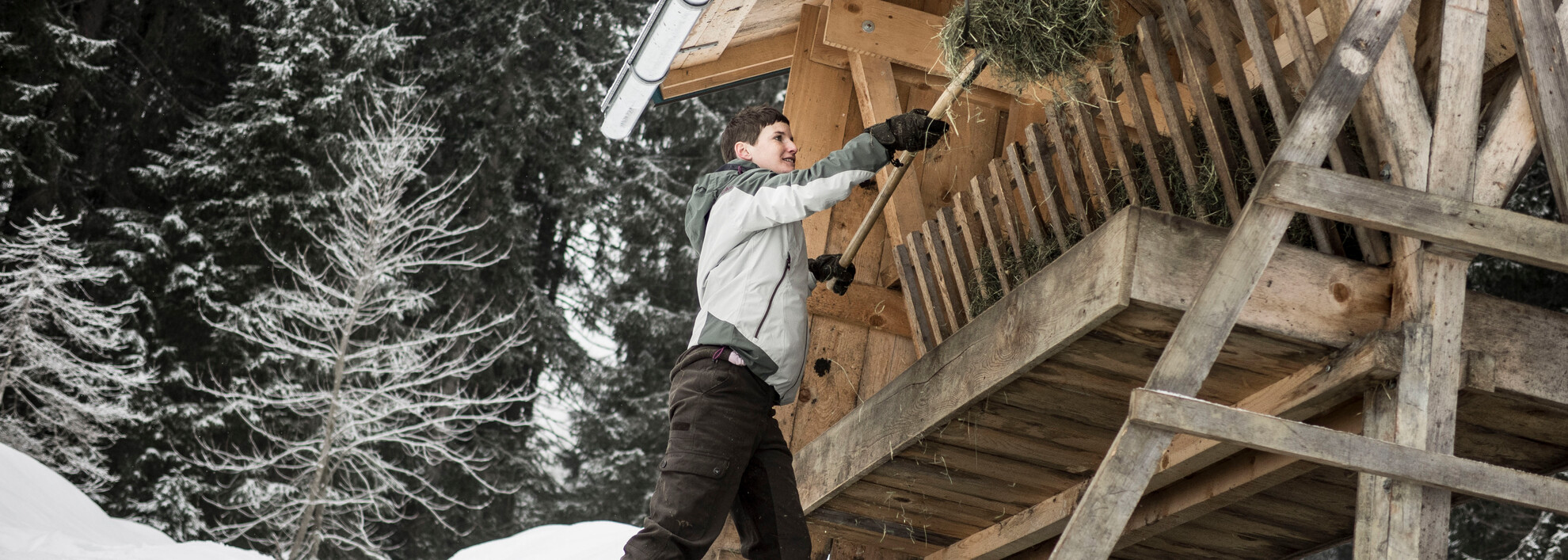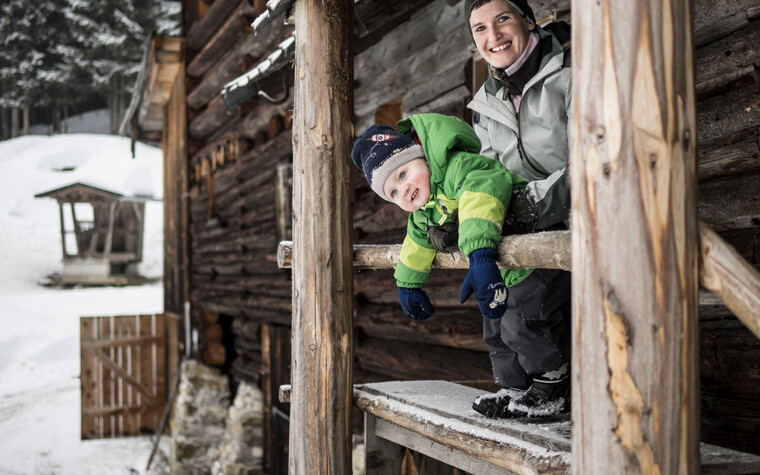

On the trail
Catherina Zwerger is a huntress, policewoman, cook and cowherd. A portrait about a down-to-earth Walser woman, who passionately likes to break new ground - even if she has to pave the way in red cut protection pants and a power saw.
Hobby: Hunting - A decision out of love
Once again, the lightheartedness is swept off the table and replaced by a more thoughtful tone. Cathi wants to frame the topic in the right context. It’s important to her to find right words. She knows that hunting does not have a good image. It's very important to her to represent the profession, or in her case her hobby, with all its facets. Far removed from the trigger-happy hunter, often portrayed in the media as nothing more than a killer. And also nothing to do with fanatical big game hunters who only care about trophies. I repeat my original question, and it turns out that her husband Martin introduced her to hunting. It was a decision that came out of love, so to speak. Love for her husband, wildlife and nature.
She also wanted to join the police. When she first tried, she was exactly one centimetre too short and her application was rejected. After this, she went to Munich, where for six months she studied forensic medicine – examining corpses. If she had liked it, and if it hadn’t worked out with the police, then she would probably have become a taxidermist. But for some reason the height restriction was lifted, Cathi was no longer too short, and began training to be a police officer. At this time, she also began her hunting education. Her police and hunting exams were just two days apart. Another mammoth project, but one which the Walser successfully mastered. Cathi passed both her police and hunting exams. Sharp tongues might claim that she has now chosen two professions with problematic images. Because, let's face it, cops are the butt of many jokes, and their work is quickly questioned. It happens slightly less to chefs – if the food is too heavily salted, well, the chef’s probably just in love.
Full hunting seminars, few exam candidates
There are not many other women in the valley who hunt, perhaps only two. The rest are all men. This begs the question, who is in the seminar room during the training? The answer: Lots of people! The seminars are always well attended. This surprises me. I want to know more. Cathi explains that many people are only interested in having more in-depth information about wildlife and the forest. To be able to read animal tracks properly, to explain the forest and its inhabitants to their children or grandchildren in detail, or out of pure personal interest. Hunting, that is to say the killing of animals, plays a subordinate role. When it comes to the hunting exam, the field thins out drastically. The exam is difficult, the failure rate is high, and the number of repeat candidates is low. This explains the well-balanced relationship between hunters and wildlife in the country.
Josef, the small roaring fir tree, is delighted to be outside and claps his hands cheerfully. When we arrive at the feeding area, Andi and his assistant set to work immediately. They begin to fill the mangers with deliciously fragrant hay. Meanwhile Cathi and I chat. Cathi draws my attention to the tracks in the snow. "Look, that’s the track of a stag", she explains. To me, it just looked like a hole in the snow. It must have been a large beast to make such a deep hole. Cathi also shows me some hare tracks, and points out the elegant track line of a fox. I'm impressed. Trudging happily through the snow tracks, Josef roars; he has discovered a deer antler.
Cathi agrees with me, however, and says when it gets dark, she always has the feeling that the wildlife is watching her. She feels relieved when she is once more sitting in the safety of her car. What captivating honesty. We share a quiet yet heartfelt laugh. She tells me that she often falls asleep in the raised hide. She would rather not think about what passes by as she sleeps, and asks herself if any of the animals find the sleeping hunter amusing.
I ask if she can remember the first animal she killed. Of course she remembers. It was a doe goat. For a long time she had the animal in her sights. She waited for the perfect line of fire before shooting. The goat died instantly. Cathi cried. She sometimes still does after shooting an animal. Because she knows that she has just snuffed out a life. And because the animal is still warm and looks alive. She shows them all the respect they deserve, and never just steps over a dead animal. She goes around. Also, she gives Death the necessary time to spread through the animal, allowing its life and its soul to escape. I understand what she means. It is the act of respecting a living being that these days is so often lost, pushed to the periphery as a taboo topic.








Share page...
...and tell others